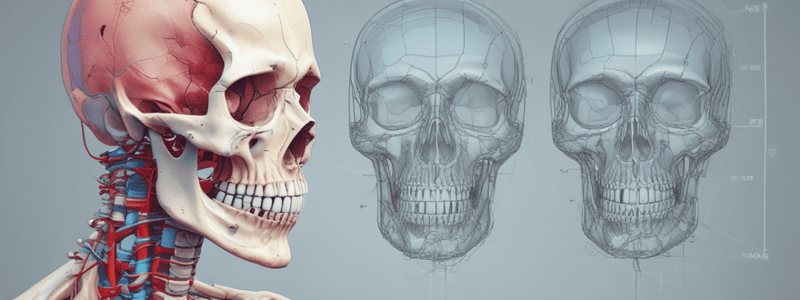Podcast
Questions and Answers
What is the purpose of iterative image reconstruction algorithms in CT?
What is the purpose of iterative image reconstruction algorithms in CT?
- To increase image noise
- To reduce the accuracy of image reconstruction
- To slow down the computing process
- To minimize radiation dose (correct)
How are correction factors determined in the iterative reconstruction process?
How are correction factors determined in the iterative reconstruction process?
- By comparing estimated to actual x-ray counts (correct)
- By ignoring actual measured counts
- By focusing on forward projection only
- By randomly selecting values
What is the final matrix solution after applying the correction formula provided in the text?
What is the final matrix solution after applying the correction formula provided in the text?
- (2.0, 3.0)
- (0.5, 0.5) (correct)
- (1.5, 1.5)
- (1.0, 0.5)
Why have iterative reconstruction algorithms resurfaced according to the text?
Why have iterative reconstruction algorithms resurfaced according to the text?
What is the primary advantage of iterative image reconstruction algorithms over filtered back-projection?
What is the primary advantage of iterative image reconstruction algorithms over filtered back-projection?
How does iterative reconstruction improve the estimated x-ray photon count distribution?
How does iterative reconstruction improve the estimated x-ray photon count distribution?
What is the key definition of iteration in the context of image reconstruction?
What is the key definition of iteration in the context of image reconstruction?
What is the first step in the iterative reconstruction process described in the text?
What is the first step in the iterative reconstruction process described in the text?
What is the purpose of the iterative reconstruction process described in the text?
What is the purpose of the iterative reconstruction process described in the text?
What is the second step in the iterative reconstruction process described in the text?
What is the second step in the iterative reconstruction process described in the text?
What is the purpose of the first correction step in the iterative reconstruction process described in the text?
What is the purpose of the first correction step in the iterative reconstruction process described in the text?
Study Notes
Iterative Reconstruction in CT
- Iterative reconstruction is a technique used in CT scans to estimate the x-ray photon counts in each projection.
- The process involves repeated calculations of the estimated x-ray photon counts and comparisons with the actual measured counts.
- The ratio of estimated to actual x-ray counts is used to formulate a correction factor to create the next estimate.
How Iterative Reconstruction Works
- The process starts with an initial assumption (e.g., all points in the matrix have the same value).
- The assumed values are compared with the measured values, and corrections are made to bring the two into agreement.
- The process is repeated over and over until the assumed and measured values are the same or within acceptable limits.
Numeric Illustration
- Initial estimate: Calculate the average of four elements and assign it to each pixel (e.g., 1 + 2 + 3 + 4 = 10; 10/4 = 2.5).
- First correction for error: Calculate the difference between original and new horizontal ray sums divided by 2 (e.g., (3 5)/2 and (7 5)/2 = 2/2 and 2/2 = 1.0).
- Second correction for error: Calculate the difference between original and new vertical ray sums divided by 2 (e.g., (4 5)/2 and (6 5)/2 = 1.0/2 and +1.0/2 = 0.5 and +0.5 = 0.5).
Advantages of Iterative Reconstruction
- Reduces image noise
- Minimizes the higher radiation dose inherent in the filtered back-projection algorithm
Resurgence of Iterative Reconstruction
- Iterative reconstruction algorithms have resurfaced due to the availability of high-speed computing.
Studying That Suits You
Use AI to generate personalized quizzes and flashcards to suit your learning preferences.
Related Documents
Description
This quiz covers the topic of iterative reconstruction in computed tomography equipments, specifically in the Radiological Techniques Department at Middle Technical University College of Health and Medical Techniques in Baghdad. Learn about the iterative techniques used for image reconstruction in CT equipments.




